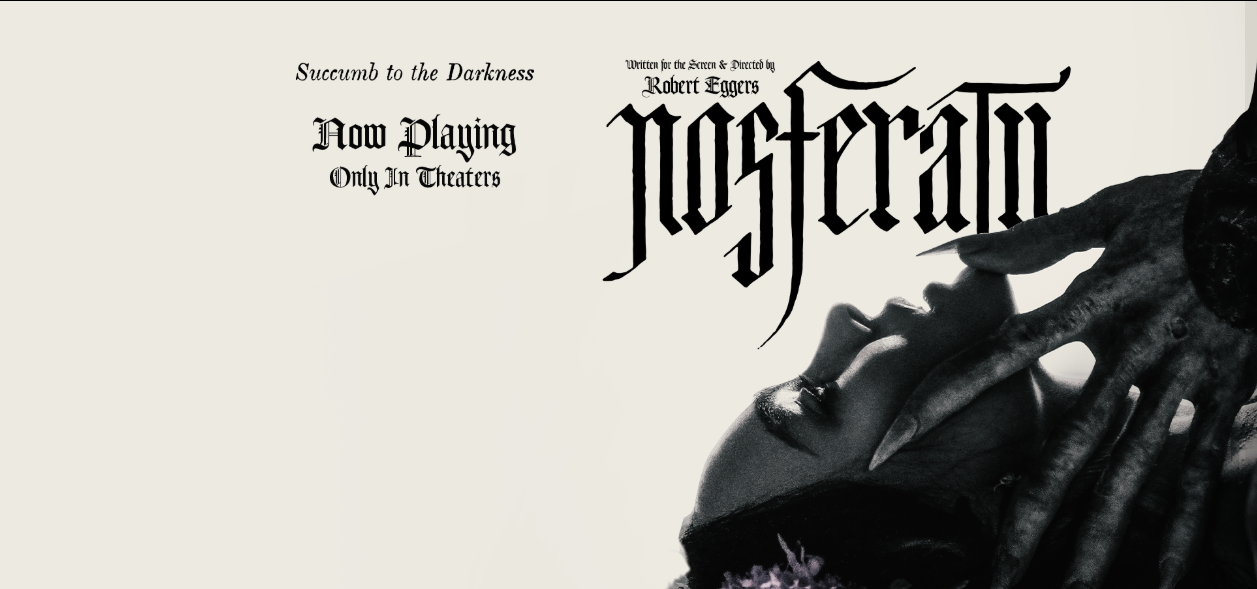
Comment Editor Lauren Penzer explores the depiction of old and new vampires, following the release of Nosferatu
As a lover of vampire fiction, the recently released Nosferatu was a much-anticipated watch. I loved the original 1922 film, but this one certainly surprised me in so many ways. For one, the ensemble cast of talented stars such as Willem Dafoe and Bill Skarsgård did an amazing job of capturing the sheer horror and uncertainty that prevails throughout the film. Lily-Rose Depp, however, stole the show; I haven’t seen much of her work before this, but her raw talents and ability to perform shone through her depiction of the strong-willed and suffering Ellen.
Usually horror doesn’t scare me very much. It’s not a brag, really; I love the genre, and always manage to admire it more than fear it. I watched The Substance recently, and though I was slightly disgusted and uncomfortable the entire time, I couldn’t seem to look away. But something about this film, from the opening sequence of deathly, nightmarish imagery, set me on edge, and that edge didn’t leave for the entire film.
Its opening sequence of deathly nightmarish imagery set me on edge
Nosferatu follows a young and gentle couple as they begin their newly-wed life. Ellen is a quiet and anxious girl who is plagued by nightmares of deathly deliverance, while her husband Thomas is an ambitious, meek man who spends most of the film being tortured and bullied. Ellen, despite this, is extremely attached to him, and is distressed when his boss charges him to visit a Count on a 12-week round trip to Transylvania. Thus follows a dramatic and yet enthralling narrative in which Thomas is kept captive by the strange and disfigured Count Orlok – amazingly played by Bill Skarsgård, as always – who in turn becomes infatuated with Thomas’ wife. A simulacrum of death haunts the film, with plagues, unexplained deaths, and approximately 2,000 rats.
In an age where vampire media has become a bit overly saturated with preening, glittering, overly-attractive Americans (which I cannot always fault, being a long-time Twilight fan), Nosferatu came along to remind us of the raw terror and grossness associated with vampires. Count Orlok is a gruesome figure, far removed from the near-human vampires that typically dominate vampire cinema of the twenty-first century. His fatal ‘romance’ with Ellen is emblematic not of the pining and sex-appeal of modern vamp romances, but tragically emblematic of the film’s central themes: sacrifice, love, and fateful death.
His fatal ‘romance’ with Ellen is tragically emblematic of the films central themes
Nosferatu not only reminded me of why I love Gothic cinema – the dark shadows, the looming score, the melodrama of it all – but why I love vampires. The utter creepiness of it all; all the prosthetics and makeup and voice-acting of Bill Skarsgård’s embodiment echoed with it the centuries of vampiric literature in all its terrible glory. I love a modern vampire drama, but I love an old one even more.
Enjoyed this? Read more from Redbrick Film:
Comments